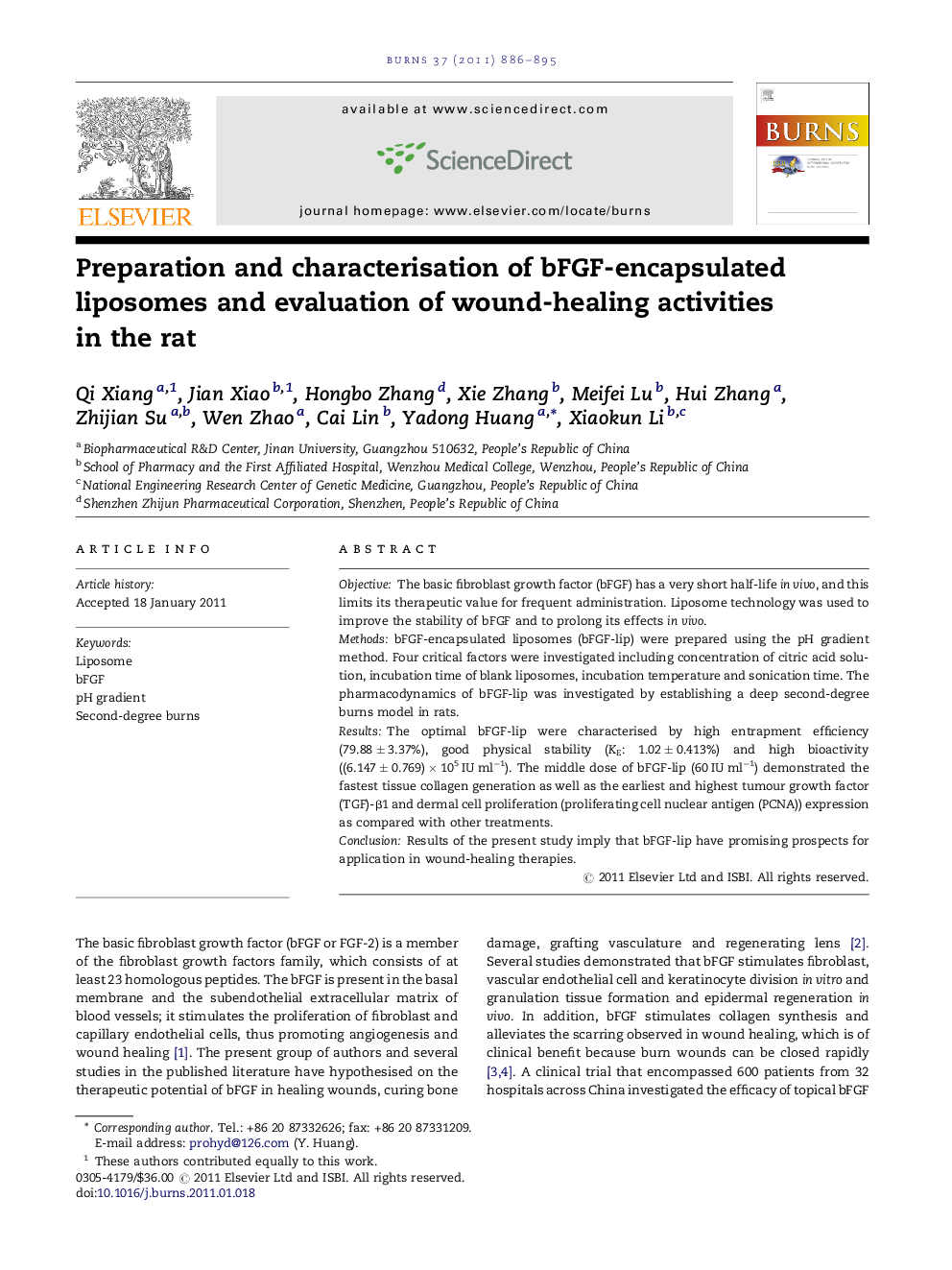| Article ID | Journal | Published Year | Pages | File Type |
|---|---|---|---|---|
| 3105146 | Burns | 2011 | 10 Pages |
ObjectiveThe basic fibroblast growth factor (bFGF) has a very short half-life in vivo, and this limits its therapeutic value for frequent administration. Liposome technology was used to improve the stability of bFGF and to prolong its effects in vivo.MethodsbFGF-encapsulated liposomes (bFGF-lip) were prepared using the pH gradient method. Four critical factors were investigated including concentration of citric acid solution, incubation time of blank liposomes, incubation temperature and sonication time. The pharmacodynamics of bFGF-lip was investigated by establishing a deep second-degree burns model in rats.ResultsThe optimal bFGF-lip were characterised by high entrapment efficiency (79.88 ± 3.37%), good physical stability (KE: 1.02 ± 0.413%) and high bioactivity ((6.147 ± 0.769) × 105 IU ml−1). The middle dose of bFGF-lip (60 IU ml−1) demonstrated the fastest tissue collagen generation as well as the earliest and highest tumour growth factor (TGF)-β1 and dermal cell proliferation (proliferating cell nuclear antigen (PCNA)) expression as compared with other treatments.ConclusionResults of the present study imply that bFGF-lip have promising prospects for application in wound-healing therapies.
